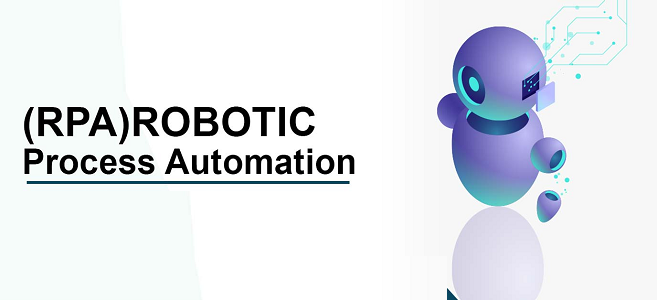RPA Implementation and Deployment: Best Practices for Successful Automation Projects
Introduction
The deployment of robotic process automation (RPA) can be a complex and daunting task for any organization, large or small. But with careful planning and execution, an RPA project can be successful. Here are some best practices for implementing and deploying RPA projects, based on our experience working with clients around the world. Let’s get started!
RPA implementation and deployment
1. Define the scope and objectives of the RPA project
Before starting an RPA project, it is important to first define the scope and objectives. This will help to ensure that the project is aligned with the organization's overall goals and objectives.
2. Identify the core components of the RPA solution
Once the scope and objectives are defined, next is to identify which core components of the RPA solution need to be implemented. This will include determining which automation tools and applications need to be used, as well as defining how these tools will be integrated into existing business processes.
3. Assess current process performance and identify areas for improvement
Once the core components of the RPA solution are identified, it is then important to assess current process performance. This will help to identify areas where improvements can be made.
4. Develop a roadmap and timeline for implementing the RPA solution
Next, a roadmap and timeline needs to be developed for implementing the RPA solution. This will provide an overview of when each component of the solution will be implemented, as well as any dependencies that may need to be addressed.
5. Identify and recruit the right personnel for the RPA project
Finally, it is important to identify and recruit the right personnel for the RPA project. This includes ensuring that the employees who will be working on the project are properly trained and equipped to handle the various challenges that may arise.
These are just a few of the key steps that need to be taken when implementing or deploying an RPA solution. Depending on the specific situation, other steps may also need to be taken. Ultimately, ensuring that the RPA solution is implemented correctly is key to success.
Consideration while implementing and deploying RPA
There are many factors to consider when implementing and deploying RPA within an organization. To ensure success, it is important to understand the capabilities and limitations of RPA technology, as well as to have a clear plan for how RPA will be integrated into existing workflows. When implementing RPA, it is important to consider the capabilities and limitations of the technology. RPA is well suited for tasks that can be completed by a machine, such as data entry or simple reporting. However, it is not well suited for more complex tasks or tasks that require human interaction, such as customer service or product support.
Another key consideration when deploying RPA is the integration of the technology into existing workflows. Often, a clear plan must be developed before implementing RPA in order to ensure that the technology is integrated smoothly into an organization’s overall workflow. In addition, it is important to select the right RPA tools and software for the specific tasks that will be automated.
Overall, understanding the capabilities and limitations of RPA technology as well as developing a plan for integrating it into an organization’s workflow are key considerations when implementing and deploying RPA within an organization. Successful implementation of this technology requires careful planning and execution.
Importance of RPA in business processes
RPA implementation and deployment are used to reduce the amount of human labor required for certain business processes. This can reduce costs associated with employee productivity, training, and turnover. RPA can also help improve customer service by automating complex customer interactions. RPA can be used to automate tasks in any business process. RPA can be integrated with any application or system. RPA can be used to automate tasks in any industry.
RPA implementation is critical to ensure that the automation project is able to meet all of the requirements and objectives. Without proper implementation, the project is likely to fail.
Deployment is also important for successful automation projects. Deployment ensures that the project is properly installed and configured. It also helps to ensure that the project is able to run smoothly and without any issues.
RPA implementation for successful automation projects
1. Define the business process to be automated: The first step is to understand the business process to be automated. This includes understanding the scope of the process, the various steps involved, the inputs and outputs of the process, and the exceptions.
2. Assess the feasibility of automating the process: Once the business process is understood, the next step is to assess whether it can be automated. In this step, an identification is done for dependencies on manual processes or on external systems, and determining whether the process can be handled by a robot alone or if some human input is required.
3. Plan the automation project: After assessing feasibility and viability, the next step is to plan the automation project. This includes defining the goals of the project, developing a plan for automating each step of the process, and determining how much human resources will be needed to complete the project.
4. Implement the automation project: After planning and implementing, it’s important to monitor and evaluate the results of the automation project. There are some other activities performed such as tracking progress and identifying issues.
5. Re-evaluate automation projects as needed: As with any automation project, it’s important to periodically re-evaluate the results and adjust as needed. It helps to assess whether the automation project is still feasible and viable, measuring the effectiveness of the automation project etc.
Benefits of RPA implementation
There are many benefits to implementing and deploying RPA within an organization. RPA can help to automate tasks which can help to improve efficiency and accuracy, as well as free up employees' time so that they can focus on more strategic tasks. Additionally, RPA can help to improve compliance and governance within an organization as well as reducing costs. Finally, RPA can help to improve customer satisfaction by providing faster and more accurate service. Overall, the benefits of RPA implementation and deployment can help to improve the productivity and efficiency of an organization.
RPA can automate many manual and repetitive tasks that are currently performed by human workers. This can lead to reduced labor costs and increased efficiency. Additionally, RPA can help to improve compliance with regulatory requirements and improve the quality of data. Finally, RPA can help to improve customer satisfaction by providing faster and more accurate service. Overall, the benefits of RPA implementation and deployment are significant and well worth consideration.
Another major benefit of RPA is the potential for improved employee productivity. By automating tasks, RPA can free up employees to focus on more strategic tasks. This can lead to increased efficiency and reduced costs associated with training new employees. Additionally, since RPA can perform multiple tasks simultaneously, it can be more effective than human workers in completing complex tasks. As a result, organizations may find that they need fewer human workers overall to provide the same level of service.
Finally, RPA can help to improve customer satisfaction. By providing faster and more accurate service, RPA can help to reduce customer wait times and improve the overall quality of customer experience. In addition, by automating repetitive tasks, RPA can help to increase efficiency and accuracy within an organization. Overall, these benefits are likely to lead to increased customer loyalty and increased business profits.
Challenges associated with RPA implementation
There are several challenges associated with RPA implementation and deployment, including:
1. Cost: RPA can be expensive to implement, especially if you need to purchase multiple licenses for different software platforms.
2. Change management: RPA can require significant changes to organizational processes and workflows. This can be disruptive and difficult to manage.
3. IT infrastructure: RPA depends on a robust IT infrastructure, including computing resources, connectivity, and data storage.
4 . Talent: RPA requires skilled personnel, who may not be available in every organization.
5. Automation skills: Many RPA tasks require some level of automation, which can be difficult to achieve without prior experience.
6. Security: Automated processes can put sensitive data at risk, so it's important to ensure that security measures are in place before deploying them.
7. Compliance: Many organizations require strict compliance standards for the software they use, which can complicate and slow down RPA implementation.
Steps involved in RPA implementation
1. Define the business case and objectives for RPA.
2. Assess the existing IT infrastructure and identify any gaps or the areas that need to be addressed.
3. Select the right RPA platform and development tools.
4. Train and deploy the RPA workforce.
5. Monitor and evaluate RPA performance.
6. Continuously improve RPA functionality and efficiency.
Conclusion
RPA implementation has become highly significant for business because it provides improved efficiency and accuracy, reduced processing times, increased compliance with regulations, and improved customer satisfaction. RPA can also help to free up employees' time so they can focus on more strategic tasks. Additionally, RPA can help to improve an organization's data quality and governance. Finally, RPA can help to reduce an organization's overall costs. Though, there are several challenges that businesses will need to address when implementing RPA. First, employees may need to be trained on how to use the technology. Second, businesses will need to ensure that the software is able to process accurate and consistent data. Third, businesses will need to make sure that regulations are met with RPA implementations.
Find a course provider to learn Robotic Process Automation (RPA)
Java training | J2EE training | J2EE Jboss training | Apache JMeter trainingTake the next step towards your professional goals in Robotic Process Automation (RPA)
Don't hesitate to talk with our course advisor right now
Receive a call
Contact NowMake a call
+1-732-338-7323Take our FREE Skill Assessment Test to discover your strengths and earn a certificate upon completion.
Enroll for the next batch
rpa certification online
- Dec 12 2025
- Online
rpa certification online
- Dec 15 2025
- Online
rpa certification online
- Dec 16 2025
- Online
rpa certification online
- Dec 17 2025
- Online
rpa certification online
- Dec 18 2025
- Online
Related blogs on Robotic Process Automation (RPA) to learn more

Who can Learn Robotic Process Automation?
Master Robotic Process Automation (RPA) and transform your career with our comprehensive courses, designed for anyone looking to improve their chances of getting job in the near future.

5 Leading Robotic Process Automation Tools
5 leading tools offer advanced features such as AI, machine learning, and low-code development to streamline workflows, reduce errors, and increase efficiency.

What is RPA certification
Robotic Process Automation (RPA) has emerged as a transformative force in the realm of business process automation, and the demand for RPA certification is on the rise. Let's delve into the factors that make RPA certification highly sought after in t

Which RPA Certification is in High Demand
RPA (Robotic Process Automation) certification is in high demand primarily due to the widespread adoption of automation technologies across industries. As businesses seek to enhance operational efficiency, reduce costs, and improve productivity, RPA

Robotic Process Automation in Finance Market Analysis, 2031
Automation has surged in demand due to its transformative impact on industries and businesses across the globe. Automation offers a powerful solution in an era marked by digitalization and efficiency. It enables organizations to streamline operations

RPA Tools and Technologies: Choosing the Right Platform for Your Business
RPA Tools and Technologies: Choosing the Right Platform for Your Business

Learn all about RPA Robotic Process Automation Tools and Technology
What is robotic process automation?
Latest blogs on technology to explore

From Student to AI Pro: What Does Prompt Engineering Entail and How Do You Start?
Explore the growing field of prompt engineering, a vital skill for AI enthusiasts. Learn how to craft optimized prompts for tools like ChatGPT and Gemini, and discover the career opportunities and skills needed to succeed in this fast-evolving indust

How Security Classification Guides Strengthen Data Protection in Modern Cybersecurity
A Security Classification Guide (SCG) defines data protection standards, ensuring sensitive information is handled securely across all levels. By outlining confidentiality, access controls, and declassification procedures, SCGs strengthen cybersecuri

Artificial Intelligence – A Growing Field of Study for Modern Learners
Artificial Intelligence is becoming a top study choice due to high job demand and future scope. This blog explains key subjects, career opportunities, and a simple AI study roadmap to help beginners start learning and build a strong career in the AI

Java in 2026: Why This ‘Old’ Language Is Still Your Golden Ticket to a Tech Career (And Where to Learn It!
Think Java is old news? Think again! 90% of Fortune 500 companies (yes, including Google, Amazon, and Netflix) run on Java (Oracle, 2025). From Android apps to banking systems, Java is the backbone of tech—and Sulekha IT Services is your fast track t

From Student to AI Pro: What Does Prompt Engineering Entail and How Do You Start?
Learn what prompt engineering is, why it matters, and how students and professionals can start mastering AI tools like ChatGPT, Gemini, and Copilot.

Cyber Security in 2025: The Golden Ticket to a Future-Proof Career
Cyber security jobs are growing 35% faster than any other tech field (U.S. Bureau of Labor Statistics, 2024)—and the average salary is $100,000+ per year! In a world where data breaches cost businesses $4.45 million on average (IBM, 2024), cyber secu

SAP SD in 2025: Your Ticket to a High-Flying IT Career
In the fast-paced world of IT and enterprise software, SAP SD (Sales and Distribution) is the secret sauce that keeps businesses running smoothly. Whether it’s managing customer orders, pricing, shipping, or billing, SAP SD is the backbone of sales o

SAP FICO in 2025: Salary, Jobs & How to Get Certified
AP FICO professionals earn $90,000–$130,000/year in the USA and Canada—and demand is skyrocketing! If you’re eyeing a future-proof IT career, SAP FICO (Financial Accounting & Controlling) is your golden ticket. But where do you start? Sulekha IT Serv

Train Like an AI Engineer: The Smartest Career Move You’ll Make This Year!
Why AI Engineering Is the Hottest Skillset Right Now From self-driving cars to chatbots that sound eerily human, Artificial Intelligence is no longer science fiction — it’s the backbone of modern tech. And guess what? Companies across the USA and Can

Confidence Intervals & Hypothesis Tests: The Data Science Path to Generalization
Learn how confidence intervals and hypothesis tests turn sample data into reliable population insights in data science. Understand CLT, p-values, and significance to generalize results, quantify uncertainty, and make evidence-based decisions.
